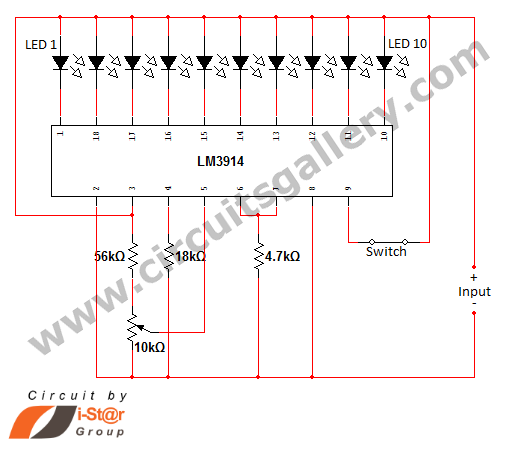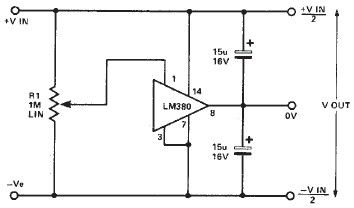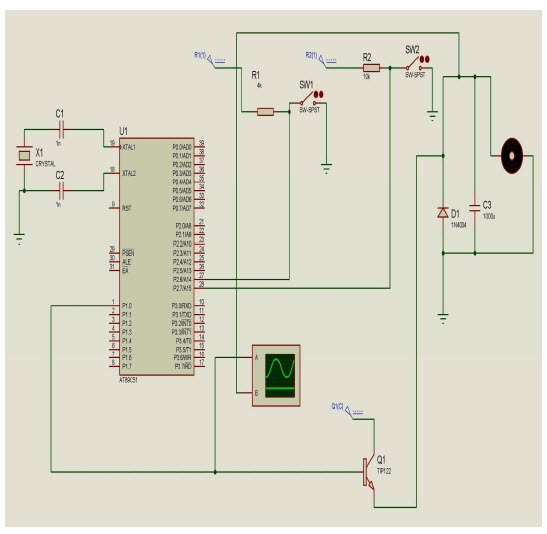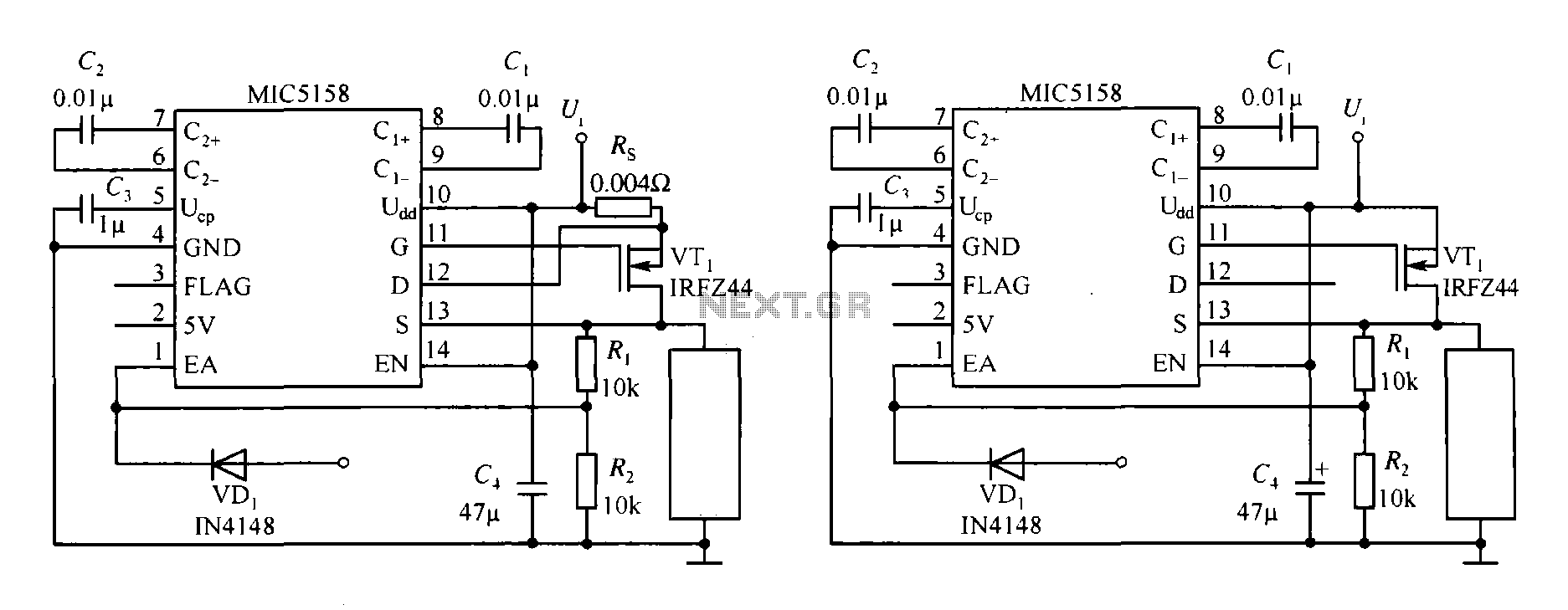
Proximity Alarm Ii Circuit

A CMOS logic gate is utilized in this circuit. When an object approaches the antenna, the change in oscillator output is detected by components 1)1 and 1)2, which is then amplified by U1C. This amplification drives Q1, activating alarm BZ1.
The circuit employs a CMOS (Complementary Metal-Oxide-Semiconductor) logic gate configuration, which is known for its low power consumption and high noise immunity. The primary function of the circuit is to detect the presence of an object near an antenna, which serves as a proximity sensor.
When an object comes within range, it causes a variation in the oscillator output. This change is detected by two components labeled 1)1 and 1)2, which likely represent specific sensor elements or input stages of the circuit. The detection mechanism is crucial as it translates the physical presence of an object into an electrical signal.
The detected signal is then fed into an amplification stage represented by U1C. This component is essential for boosting the signal strength, ensuring that it is sufficient to trigger subsequent actions in the circuit. The amplification process is critical in environments where the initial signal may be weak or prone to noise interference.
Following amplification, the output drives a transistor, Q1, which acts as a switch. When Q1 is activated, it allows current to flow to the alarm system, represented by BZ1. This alarm may be a buzzer or other alerting mechanism, providing an audible signal to indicate that an object has been detected.
The overall design of the circuit highlights the integration of analog and digital components to create a responsive detection system. The use of CMOS technology ensures efficiency, while the combination of detection, amplification, and actuation stages allows for reliable operation in various applications, such as security systems, automation, and proximity sensing. A CMOS logic gate is used to make up this circuit. When an object is near the antenna, the change in oscillator output is detected by 1)1 and 1)2 and amplified by U1C, which drives Ql, sounding alarm BZ1.
The circuit employs a CMOS (Complementary Metal-Oxide-Semiconductor) logic gate configuration, which is known for its low power consumption and high noise immunity. The primary function of the circuit is to detect the presence of an object near an antenna, which serves as a proximity sensor.
When an object comes within range, it causes a variation in the oscillator output. This change is detected by two components labeled 1)1 and 1)2, which likely represent specific sensor elements or input stages of the circuit. The detection mechanism is crucial as it translates the physical presence of an object into an electrical signal.
The detected signal is then fed into an amplification stage represented by U1C. This component is essential for boosting the signal strength, ensuring that it is sufficient to trigger subsequent actions in the circuit. The amplification process is critical in environments where the initial signal may be weak or prone to noise interference.
Following amplification, the output drives a transistor, Q1, which acts as a switch. When Q1 is activated, it allows current to flow to the alarm system, represented by BZ1. This alarm may be a buzzer or other alerting mechanism, providing an audible signal to indicate that an object has been detected.
The overall design of the circuit highlights the integration of analog and digital components to create a responsive detection system. The use of CMOS technology ensures efficiency, while the combination of detection, amplification, and actuation stages allows for reliable operation in various applications, such as security systems, automation, and proximity sensing. A CMOS logic gate is used to make up this circuit. When an object is near the antenna, the change in oscillator output is detected by 1)1 and 1)2 and amplified by U1C, which drives Ql, sounding alarm BZ1.





